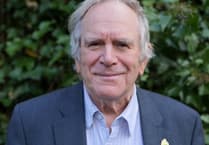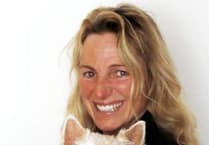The Forest has many remote areas that will not be visited by passing travellers, usually only accessed by people who already live there. You are unlikely to go through the villages and hamlets of Northwood Green, Woolaston Common, the Pludds, Harrow Hill, Wigpool or Oxenhall, if your destination is not one of those places. But the place most unvisited by passing traffic must be St Briavels Common, with its labyrinth of lanes, tracks and dead ends that will confuse all but local residents. If you’re going to Brockweir from St Briavels, then you might try to cross the Common although it might be safer to take the B4228 to Hewelsfield and then take the road to Brockweir, but unless your aim is a residence on the Common, it might be frustrating journey. The tracks are narrow and peaceful, you know that the river is somewhere below you behind the trees, but you can easily be confused.
The area was an isolated place in the 19th century, with many ale houses and squatters’ tenements for the workers on the busy river trade on the River Wye. The gentrification of the area developed in the later part of the 20th Century, with the opening of the Severn Bridge, the building of new houses at Barrowell Lane and Castle Crescent, and the development of the Common.
This secret area has many local stories – Billy Midwinter, the only cricketer to play for England against Australia and for Australia against England, was born in St Briavels Common in 1851. I think that the St Briavels community should place a memorial plaque to Midwinter at the gates to the village cricket ground, which will no doubt bring lots of Australian cricket fans to the village.
Philip Toynbee, writer, intellectual, set up his home on the Common as a hippie commune, which survived for a few years in the 1970s. ‘Stanica St Briavels’, known as the Polish Scouts House, flourishes on the River Wye where Common meets river. The local doctor in the area was John Eskell, who lived at the village end of the Common, and he is celebrated in the title of ‘A Fortunate Man’, a profoundly penetrative insight into the work of a rural doctor at the time. John Berger wrote the words of the book, and co-author Jean Mohr provided the atmospheric photos of a remote community. The book became required reading for trainee medical general practitioners. To celebrate the 50th anniversary of the publication of the book, a weekend of events was held in 2018 to celebrate ‘A Fortunate Man’, which included a panel discussion held at St Briavels Village Hall.
The Tump over the road from St Briavels Castle provides a great aerial view of the Wye Valley and the Common. Tump is an ancient forest dialect word that means a hill. As well as at St Briavels, there are ‘tumps’ in Ruspidge and Lydbrook, and there are Tump Houses in Blakeney and Coleford. I tried to get more locations on a computer search, googling ‘Dean’ and ‘Tump’, but I kept on getting references to the American presidential election made by American political commentator John Dean. I can’t think why.




